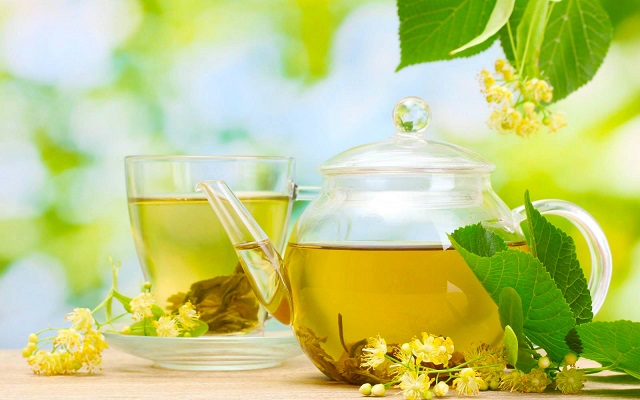
Linden is a perennial deciduous tree that is very widespread in our region. Although it does not require particularly high-quality soil, it thrives best on fertile and loose soil. It usually reaches a height of 25 to 30 meters. In our climate, two types of linden are most common: crown-leaved or black linden and small-leaved or white linden (another name is lipolist).
The black linden (lat. Tilia plathyphyllos) blooms at the end of May and grows mostly in mountain, oak and beech forests, while the white linden (lat. Tilia cordata) usually blooms in June, about two weeks after the black linden. It grows in oak forests and is very resistant to frost. The linden flowers are harvested as soon as they start to bloom because there is no benefit from an over-blooming linden. It is best to pick linden in dry and nice weather and outside the populated area, where there is no dust. Then the flowers are quickly dried in a draft or in a drying oven at 40 degrees in thin layers.

What is included in the composition of the linden flower?
The linden flower contains flavonoids (rutin, hyperoside and quercetin), then sugars, mucilage and essential oils.
For what health problems is linden tea recommended?
The medicinal properties of linden bark and flowers were known even in the time of the Old Slavs, who lived in linden forests and made tea from this plant to relieve numerous health problems, primarily headaches, flu, anxiety and stomach problems.
Doctors in ancient times were familiar with the fact that this tea promotes sweating, which is why they used it to lower elevated body temperature and calm colds and fevers.
Thanks to the essential oils it contains, the linden flower has been used since ancient times as a medicine to relieve nervous tension in nervousness, insomnia, irritability and anxiety. These essential oils also relieve muscle spasms. So, if you suffer from stress and insomnia, replace coffee with linden tea.
Linden tea has a beneficial effect on migraines caused by sinus inflammation, and also very effectively treats colds, sore throats and all types of coughs because it reduces irritation of the mucous membrane of the upper respiratory tract and prevents infections.
This tea is an excellent help in diseases of the heart and blood vessels. It has a beneficial effect on atherosclerosis (clogged arteries), hypertension and many other cardiovascular problems. Some experts claim that linden tea has a healing effect on the walls of blood vessels, and even helps with varicose veins and acts as an anticoagulant, i.e. prevents blood clotting.
Linden tea is also an effective remedy for cellulitis (inflammation of the skin manifested by irritation and swelling) because it kills the bacteria that cause the appearance of this disease.
This tea combined with a teaspoon of honey has a preventive effect on inflammation of the lungs, sinuses and throat and has a beneficial effect on the kidneys and bladder because it prevents the occurrence of urinary infections.
Linden tea is also used as an aid in the treatment of stomach problems, diarrhea and for better digestion.
This tea, sweetened with a teaspoon of honey, is also safe for pregnant women. If you are pregnant, consult your doctor about the dosage and do not overdo it, but try to drink it in moderate quantities.
Linden tea is so mild that it can be used as an addition to baby baths, and even children can drink it. It has a beneficial effect on the problems of premenstrual syndrome, but also on those in menopause, especially on nervousness and insomnia.
This tea is also used to treat anemia, purify the blood, expel excess fluid from the body, against spasms (due to spasmolytic effect), to relieve burns and wounds, to prevent hair loss, as well as against wrinkles, for skin care and regeneration.
How is linden tea prepared?
Linden tea has a very distinctive and pleasant taste, and its preparation is simple.
Take one to two teaspoons of dried linden flowers, pour a cup (250 ml) of boiling water over it, cover and let it steep for 5 to 10 minutes at most. After that, strain the tea as best you can and drink it three times a day.
Linden tea is best drunk while it is still warm. You can sweeten it with honey and consume it several times a day if you want. Since it is a medicinal herbal tea, you can drink one cup every day, which will prevent the occurrence of certain ailments. If you have health problems that can be cured by this tea, you can drink up to 3 cups a day.
However, do not overdo it because excessive amounts of linden tea can cause heart problems and other side effects. Also, people taking medication for high blood pressure should avoid this tea because of the side effects that may occur in that case.